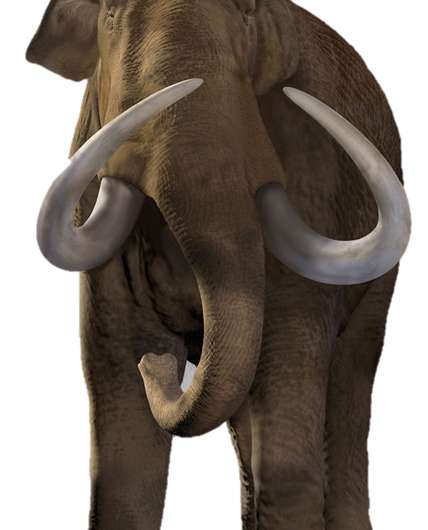Researchers use computer models to learn about ice age survivor species

Researchers have found that the extinction of North America's megafauna, such as large mammal species including mammoths and saber toothed cats, dramatically changed how species interacted after the end of last ice age, the Pleistocene, some 11,000 years ago.
The study, released recently in the journal Ecography, is among the first to examine how the extinction affected the distributions and interactions among surviving carnivores. The study focuses on the impacts on wolves, coyotes, foxes, and domestic dogs, collectively referred to as canids.
The research was led by Melissa Pardi, a doctoral candidate and paleontologist at the University of New Mexico, along with Felisa Smith, a professor of Biology also at UNM.
For decades,paleontologists have debated the causes of the extinction of ice age megafauna, but more recently scientists have shifted their attention to the consequences. "Whatever the cause of the extinction, humans or climate, we are certain that the disappearance of millions of large mammals resulted in major ecosystem changes," said Pardi. "What we're trying to do is figure out what those changes were."
"What is so exciting about this project is that the animals we have today are the same species that interacted with extinct animals like dire wolves," said Pardi. The researchers wanted to know how smaller canids, like coyotes, responded to the extinction of large competitors. "It's tricky to predict," she said. "On the one hand, competition may have decreased. On the other hand, many prey species also went extinct and humans, which were probably hunting similar things, would have also been a significant challenge to contend with."
The researchers used the fossil record of each canid species from the past 20,000 years to build models that predicted their expected distributions in the past. From those models they were able to tell whether species were overlapping in space more or less than expected following the extinction. Increased overlap suggested that species were better able to share the same areas, where as decreased overlap suggested that species were avoiding each other.
Researchers found that canid species began using different spatial areas and were probably avoiding each other following the Pleistocene extinction.
"After the extinction interactions between canids changed dramatically," said Smith, "and not always in the directions we would have predicted. The influx of a novel predator, humans and their dogs, also seems to have impacted distributions"
Pardi and Smith hope more studies such as theirs will influence how conservation scientists view communities.
"When we see extinctions in modern ecosystems, we tend to only consider the individual species that go extinct," remarked Pardi, "what we often don't see are the changes in interactions throughout the rest of the community. We don't just lose species, we lose those connections."
More information: Melissa I. Pardi et al. Biotic responses of canids to the terminal Pleistocene megafauna extinction, Ecography (2015). DOI: 10.1111/ecog.01596
Felisa A. Smith et al. Unraveling the consequences of the terminal Pleistocene megafauna extinction on mammal community assembly, Ecography (2015). DOI: 10.1111/ecog.01779
Journal information: Ecography
Provided by University of New Mexico




















